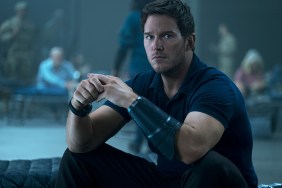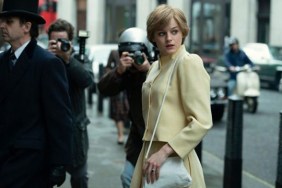
Don’t miss our previous “Origins and Evolutions” which cover topics such as the Green Goblin, Rhino, the X-Men’s Sentinels, and Tom Clancy’s Jack Ryan.
Origins & Evolutions: Frankenstein
-
Frankenstein, or, The Modern Prometheus

Originally published anonymously in 1818, Shelley's novel is famously said to have originated from a 'contest' between herself, her future husband Percy Shelley, the poet Lord Byron, and John Polidori where she concocted the idea for the novel.
Subtitled “The Modern Prometheus,” a play on the Greek myth of the Titan that created mankind, the novel refers to its monster by many variations including "creature", "fiend", "wretch", "vile insect", and "daemon.”
Shelley wrote the monster's first appearance as follows: “His yellow skin scarcely covered the work of muscles and arteries beneath; his hair was of a lustrous black, and flowing; his teeth of a pearly whiteness; but these luxuriances only formed a more horrid contrast with his watery eyes, that seemed almost of the same color as the dun-white sockets in which they were set, his shriveled complexion and straight black lips.”
-
Edison Studios Frankenstein

Ninety two years after the debut of Shelley's novel came the first film adaptation of the material, and it's not from Universal Studios. Originating from Thomas Edison's Edison Studios, J. Searle Dawley's Frankenstein was a 16 minute short that liberally adapted the source material, it's biggest change being the monster's creation in a vat instead of by construction. It was originally believed to have been lost to time but a print of the film was recovered in 1963 and much like the monster now lives on.
-
Universal's Frankenstein

Twenty-one years after the original Frankenstein adaptation came the film everyone knows, Universal Studio's Frankenstein directed by James Whale. Boris Karloff portrayed the monster the film and even though it's one of the most iconic film performances of all time, his identity was kept a secret in all promotional materials prior to release. Makeup artist Jack Pierce designed the look of the creature for the film, which differed significantly from the description in the text. Boasting the flat top head, neck bolts, and signature forehead scar, Pierce's design has since gone on to become a staple in the character's identity, despite being trademarked by Universal Studios.
-
The Bride of Frankenstein

Four years later, Frankenstein director James Whale returned with Karloff to make a sequel to the film which featured Elsa Lanchester as both the titular “Bride,” and as the original author, Mary Wollstonecraft Shelley. Makeup artist Jack Pierce returned for the sequel and helped design the Bride's iconic look, along with input from Whale.
In the film, Henry Frankenstein (once again played by Colin Clive) is approached by his former mentor Doctor Pretorius to create a mate for his original monster, which goes about as poorly as you can expect.
-
Frankenstein Meets The Wolf Man

Functioning as both a sequel to “The Ghost of Frankenstein” and “The Wolf Man, 1943 saw the first of Universal's ensemble monster movies with Frankenstein Meets the Wolf Man. Lon Chaney reprises his role of Larry Talbot while Bela Lugosi plays Frankenstein's monster in what would go on to be the first of the “Universal Monster Rally” movies. The film also establishes the long standing trope of Frankenstein's monster walking with his arms extended in front of him, a result of the creature losing its eyesight in the previous film.
In the film, Larry Talbot (Chaney) travels to the Frankenstein castle in hopes of finding a way to end his life permanently, due to his being resurrected at the start of the film. When he arrives he finds the monster frozen in ice below the castle and hopes to use him to locate the long dead doctor's secrets, but when he transforms into the Wolf Man, the fighting begins.
-
House of Frankenstein

The “Monster Rally” films got even bigger just a year later with the release of “House of Frankenstein.” Move of Avengers, this was the first character ensemble film and it included Boris Karloff as the mad scientist Dr. Gustav Niemann, J. Carrol Naish as the hunchback Daniel, John Carradine as Count Dracula, Lon Chaney, Jr. as Larry Talbot/The Wolf Man, and Glenn Strange as Frankenstein's Monster.
The title of the film comes from it taking place, once again, at Castle Frankenstein and even picks up after the events of Frankenstein Meets The Wolf Man.
-
Abbot & Costello Meet Frankenstein

The last of the “Monster Rally” films, and the first intentionally funny one, Abbot & Costello Meet Frankenstein featured Glenn Strange as the monster for his third and final time as the creature. Though not considered “canon” with the rest of Universal's monster movie, the film is looked upon as a “farewell” to the monsters.
-
Hammer Films' Frankenstein

In 1957 a new tradition began, that of the Hammer Horror Films Frankenstein series. The first in the series, The Curse of Frankenstein, featured Peter Cushing as Baron Victor von Frankenstein and Christopher Lee as The Creature. The film features some distinct differences from both Shelley's novel as well as previous Frankenstein adaptations including the monster being brought to life more than once, and even it perishing in vat of acid.
Cushing would go on to to play the Baron in five of the six sequels to “Cure” including: “The Revenge of Frankenstein,” “The Evil of Frankenstein,” “Frankenstein Created Woman,” “Frankenstein Must be Destroyed,” and “Frankenstein and the Monster from Hell.” Another sequel, “The Horror of Frankenstein,” featured Darth Vader himself David Prowse as the monster.
-
Herman Munster

In 1964, CBS began its original monster-family sitcom “The Munsters,” which featured Fred Gwynne as the patriarch of the family Herman. Herman not only shared distinct qualities with Universal's Frankenstein, in the context of the show he claimed to have been built by Dr. Victor Frankenstein. In 2012 NBC debuted a modern reimagining of the series titled “Mockingbird Lane” with Jerry O'Connell playing Herman.
-
Lurch

The same year as “The Munsters,” ABC began airing their adaptation of the comic strip “The Addams Family,” which featured Ted Cassidy as the butler “Lurch.” Lurch is often thought of as a Frankenstein like character, though the primary similarities are in his height and consistent grunting. Cassidy went on to voice the character in the 1973 animated series while Carel Struycken played the character in all three “Addams Family” films.
-
Frankenstein Conquers the World

In 1965, the famous Toho Studios, in search of a new Kaiju series brought us the film Frankenstein Conquers the World. In the film, Nazi scientists have captured the heart of the Frankenstein monster which is then transported to Hiroshima, just before the atomic bomb is deployed. Years later a radiation tolerant boy is found in the streets of Hiroshima, who the scientists theorize may have grown from the heart of Frankenstein. The boy grows to the size of one of Toho's famous Kaiju by the end of the film, and even engages in a battle to the death with the Kaiju Baragon. The film was followed the next year by the famous sequel “War of the Garagantuas.”
-
Andy Warhol's Frankenstein

Directed by Paul Morrissey, Andy Warhol's Frankenstein, also known as Flesh for Frankenstein, has the grand distinction of being one of the only Frankenstein films to be given an “X” rating by the MPAA. The film depicts Victor Frankenstein as a madman hoping to create his own “perfect Serbian race” to do his bidding, though he initially finds the libido of his male creation lacking (yeah, it's that kind of movie.) To further spice things up, Andy Warhol's Frankenstein was presented in 3-D with all the gory bits accentuated.
-
Young Frankenstein

Having conquered the western in “Blazing Saddles,” Mel Brooks turned his eye to the world of horror films with “Young Franeknstein,” a film he directed and co-wrote with Gene Wilder. Wilder starred as the doctor in the film with the legendary Peter Boyle as the monster. Unlike other derivative Frankesntein productions though, “Young Frankenstein” actually used several props from the original 1931 film.
-
Monster Squad

In 1987, Fred Dekker, along with Lethal Weapon and Iron Man 3's Shane Black, brought us Monster Squad, a film about a group of horror obsessed kids that have to take on a collection of the famous monsters. The group features all the usual suspects including Dracula, The Wolf Man, The Mummy, The Creature, and of course Frankenstein. The creatures were all redesigned for the film by a special effects team that included Stan Winston, marking the only time the legendary effects maker designed the creature.
In the film Frankenstein, played by Tom Noonan, is recruited by Dracula to join his band of monsters, but refuses due to he not being an “evil” monster like the rests. After befriending the lead character's little sister, the monster actually helps defeat the monsters in the film's climax.
-
Frankenstein Unbound

Based on the novel by Brian Aldiss, cult filmmaker Roger Corman brings us Frankenstein Unbound, a film about a scientist, Joe Buchanan (played by John Hurt), that invents a machine that accidentally creates rifs in space-time. Hurt's character gets caught in one of these and is transported to Switzerland in 1817 where he meets Victor Frankenstein (Raul Julia) and eventually his monster (Nick Brimble). Frankenstein's bride is killed by the monster, who demands that if he cannot have a mate his creator won't have one either. As Frankenstein and Buchanan bring his bride to life, another rift in space-time opens sending the two doctors and the two monsters back into the future.
-
Mary Shelley's Frankenstein

Directed by and starring Kenneth Branagh, the film famously featured an all-star cast including Branagh as Victor Frankenstein, Robert De Niro as the monster, Helena Bonham Carter as Elizabeth, Ian Holm as Baron Frankenstein, and John Cleese as Professor Waldman. Though the film gained a lackluster response critically it did go on to gross over $100 million at the global box office and received an Academy Award nomination for “Best Make-Up.”
The film is probably the closest adaptation to Shelley's original novel of all the adaptations that have been filmed throughout the years, though it does stray substantially at some points.
-
Van Helsing

In 2004, Universal was hungry for an action franchise, and having not made a film with their classic monsters in sometime, the idea of Van Helsing came along and ended up on the big screen. Featuring Hugh Jackman as the titular hero, the film also brought the Wolf Man, Dracula, Mr. Hyde, and Frankenstein's monster back to the big screen. The monster, played by Shuler Hensley, was actually integral to the film's plot, with Dracula using it as a conduit for bringing his horde of vampire bat children to life.
Hensley would later go on to star as The Monster in the Broadway musical version of “Young Frankenstein.”
-
Marvel Comic's Frankenstein

Even though he's appeared in countless films throughout the year, he's also had a prosperous career in comics as well. Marvel's very own version of Frankenstein has appeared in numerous comics over the years including X-Men, Silver Surfer, Fantastic Four, Daredevil, and has even teamed up with some of the other monsters in the Marvel Universe to form the “Legion of Monsters.”
-
DC Comic's Frankenstein

On the flipside, DC Comic's Frankenstein has also enjoyed a prosperous comic book career, though he made his debut in the 2005 mini-series. His most famous ventures have been the “Seven Soldiers” mini-series, his own series in the “Flashpoint” event titled Frankenstein and the Creatures of the Unknown, and most recently his very own series in the DC New 52 titled Frankenstein: Agent of S.H.A.D.E.
The creature features a similar design to previous incarnations of the monster, but carries with him a giant sword which he claims used to belong to the archangel Michael.
-
Bernie Wrightson's Frankenstein

The most famous comic book representation of Frankenstein no doubt comes from Bernie Wrightson's illustrated adaptation of Shelley's novel from 1983. Instead of using the other films, comics, or adaptations as an inspiration for his drawings, Wrightson used only the source material as his guide, basing all of his drawings on Shelley's descriptions.
Wrightson would later go on to draw a “sequel” to Shelley's Frankenstein in 2011 with writer Steve Niles, titled “Frankenstein Alive, Alive!”
-
Dean Koontz's Frankenstein

Dean Koontz's Frankenstein re-imagines the mythos of the story featuring the monster, named Deucalion, as a tattooed man and sleight-of-reality artist that goes after the latest devious creations of his creator Victor Frankenstein, who now goes by the name Victor Helios.
The primary plot of the series sees Helios creating new monsters in modern day New Orleans, often combining dead tissues with modern technology, while also being opposed by his first creation. The series is comprised of five novels including “Prodigal Son,” “City of Night,” “Dead and Alive,” “Lost Souls,” and “The Dead Town.”
-
I, Frankenstein

The latest feature film to focus on the creature stars Aaron Eckhart as Frankenstein's original monster, who names himself Adam, a direct reference to Shelley's orignial text. Based on the graphic novel by Kevin Grevioux, I, Frankenstein sees Adam caught in the middle of a war between demons and gargoyles while both sides fight to find out the secret of his own immortality.









